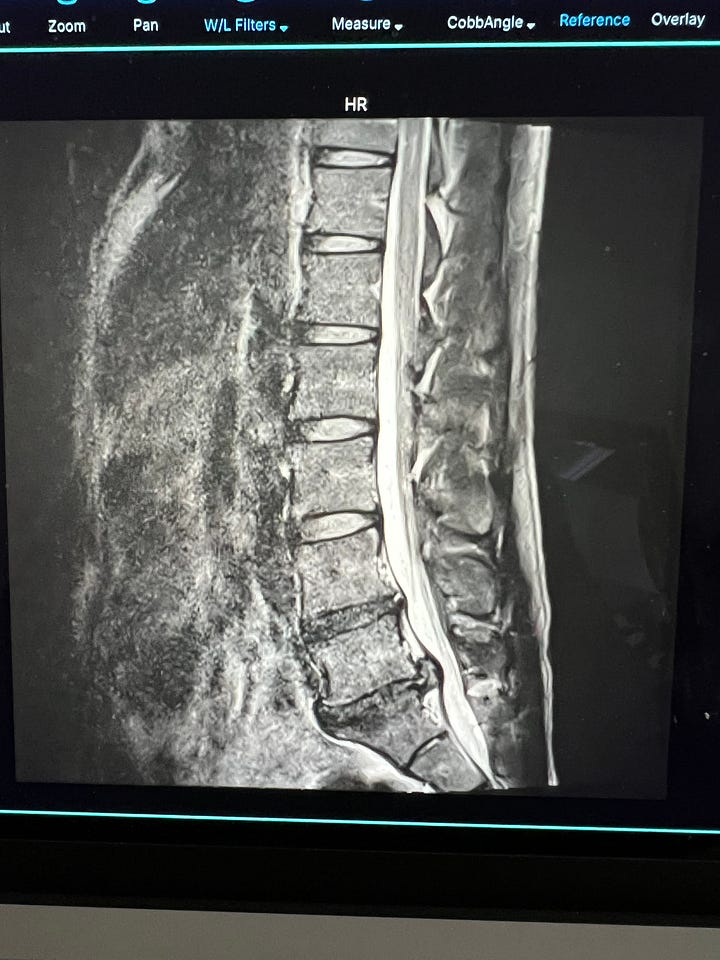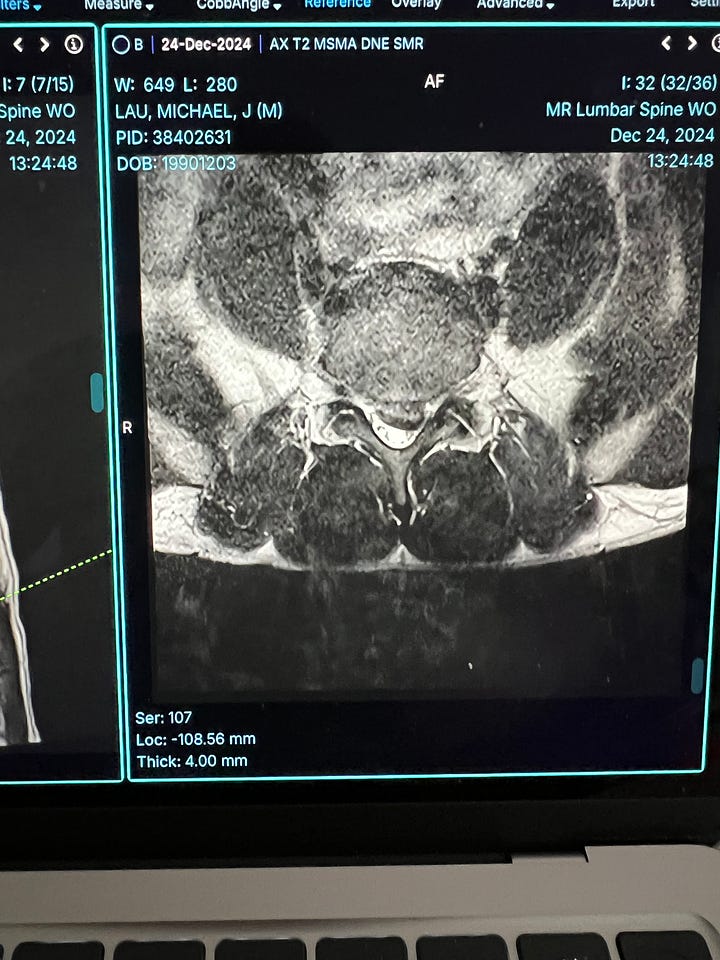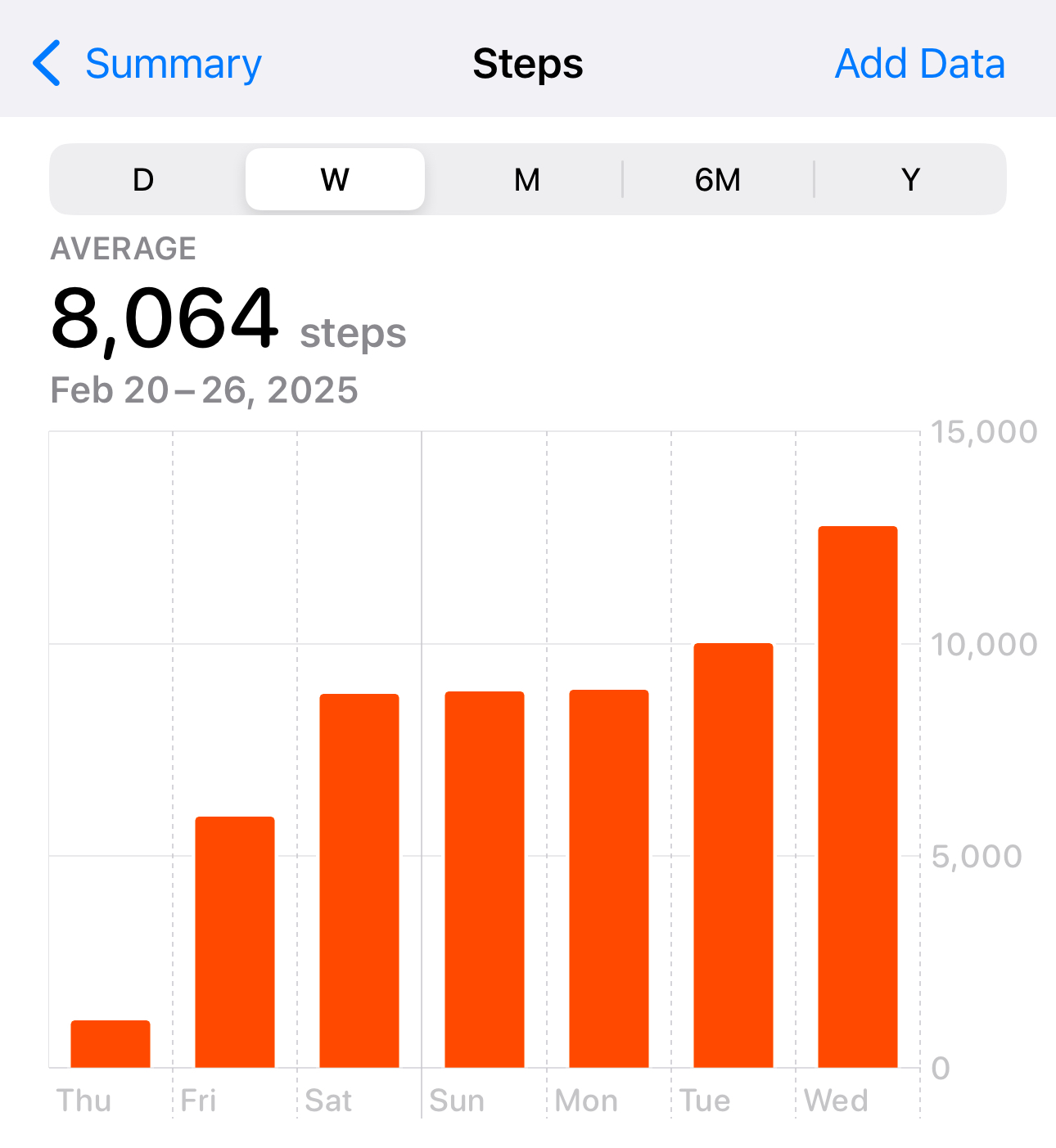When a Physical Therapist Needs Surgery: My Journey from Practitioner to Patient
I Spent My Career Helping Others Avoid Surgery—So What Did It Mean When I Couldn’t Help Myself?
For years, I prided myself on practicing what I preached. I’m a Doctor of Physical Therapy, co-founder of two companies dedicated to empowering people to take control of their health, and someone who has spent his entire career teaching others how to prevent injuries and avoid surgery. I believed in the power of movement, strength, and consistency—and I still do.
But then, I found myself in a position I never thought I’d be in: needing back surgery.
The Battle Against Pain
My journey with back pain started long before this past year. It actually began in college. I first injured myself deadlifting, and at the time not knowing any better, I thought it was just a hamstring strain. It took six months to get better, and things seemed to improve. But then, about a year later, I had another episode. And then another. It became a pattern—like clockwork, once a year, I’d have a flare-up.
I then went to physical therapy school at the University of Southern California and I learned how to better manage my symptoms. I learned more about my body and how to live a pain free life even with a disc bulge and I managed my flareups quite well.
Yes, the presence of “pathology” on MRIs/CTs isn’t always what it seems. 37% of 20 year-olds have disc degeneration on imaging, but have no pain!
I learned what movements aggravated it, how to temporarily scale back my activities and adjust my training and lifestyle to keep it under control, and how to build a more robust and resilient back. Flareups went from a six month debacle every year, to a 4-6 week modified training/rehabilitation plan every other year. Most importantly, the flare ups were never debilitating. It was just something I had to stay on top of—an occasional reminder that I needed to be diligent with my Prehab work.
Then, this past year happened.
For the first time, my usual strategies weren’t enough. The flare-ups became more frequent, the recovery periods got longer, and the pain became less predictable. My clinical presentation was also completely different. It wasn’t just an occasional inconvenience anymore—it was starting to dictate how I lived my life. I had to limit social, gym, and sporting activities significantly more than I would have liked, which affected my own self-image. Unsurprisingly, I also battled depression throughout the entire year. That’s when I knew something had shifted.
As a physical therapist, I was in a strange position—because I knew what I was supposed to do. I had helped countless patients navigate similar issues and had literally written the majority of lower back programming on the Prehab App. I had helped others avoid surgery through proper intervention, and I wanted to believe I could do the same. The mental battle was just as difficult as the physical one. Was I just not doing enough? Was it just my depression and psychosocial factors? And worst of all: If I ended up needing surgery, did that mean I had failed?
I wouldn’t have admitted it at the time, but deep down, I wrestled with an uncomfortable truth:
If I couldn’t help myself, what did that say about me as a PT? Was I a failure?
Accepting That I Needed a Team
Before I could even think about surgery, I had to accept something else first: I couldn’t do this alone.
For years, I had been my own physical therapist. I wrote my own rehab plans. I modified my own workouts. I adjusted my own movements. I was convinced I could keep my budging disc at bay. And for years, that belief was justified. But at a certain point, I realized I was getting in my own way. I was too close to the problem. If this were a patient in front of me, I would’ve made objective decisions. But when it was me, my own biases, fears, and frustrations clouded my judgment.
So, in April, I made a decision: I needed a team.
The first step was handing over my rehab plan to someone I trusted. Dorian, our Director of Education at Prehab Physical Therapy, became my lead physical therapist. I let him take the lead on my plan of care because I knew I needed an outside perspective.
But I didn’t stop there. I enlisted the help of two different dry needling specialists, Fred & Eric, to help manage my symptoms and keep me moving. Furthermore, I sought advice from one of the smartest people I know (and best orthopedic surgeon in the world), Dr. Nima Mehran, who helped navigate my foray into true medical management. A steroid pack did wonders, as did epidural injections from an anesthesiology and pain management specialist, Dr. Chad Heng, which also helped significantly. I wanted to explore every possible avenue before considering surgery.
This was another realization:
Even as a PT, I needed other people to treat me. Coaches need coaches too.
And for a while, this approach worked. I had good days and bad days, but I still believed I could turn things around without surgery. Then, August hit.
The Decision to Have Surgery
I flat-out didn’t want surgery.
It wasn’t even something I was willing to consider at first. I had worked with so many patients who had gone through failed back surgeries—fusions, disc replacements, even microdiscectomies—all likely because they didn’t need them in the first place. I had seen firsthand the people who, if they had just done the right rehab first, could have likely avoided surgery altogether.
Instead, these patients came to me post-surgically with hardware in their spines, chronically weakened core control, habitual poor movement patterns, and no real understanding of how to manage their bodies. And now, they weren’t just dealing with the same contributing factors they had before—they were now dealing with surgical recovery on top of it. Getting back to where they wanted to be was a bigger hurdle than it needed to be.
So, when it came to my own back, I told myself I’d do whatever it took to avoid that outcome.
August was a wake-up call. I went on a fishing trip to Alaska with my family, something I had been looking forward to for months. Then, I flew to Australia for a conference. Both trips should have been great experiences, but instead of fully enjoying them, I spent most of my time managing my pain. I had to completely modify how I moved, how long I walked, and what activities I did.
And when I got back home, the real tipping point came: something as simple as walking my dogs—something I did every single day—became agonizing.
That was when I knew it was time. I wasn’t living my life anymore. And the path I was on wasn’t sustainable.
I had exhausted all conservative options for over a year with this episode (and even 13 years since the original injury). Furthermore, every orthopedist I consulted with said I was actually a really good candidate for surgery, giving me the confidence this was the right move.
So, on Thursday February 20, 2025, I went under the knife for the first time ever by the amazing spine surgeon Dr. Amandeep Bhalla.


The First Pain-Free Moment
The surgery itself was almost anticlimactic. After months—years—of navigating pain, of working around it, of feeling like I was fighting against my own body… I woke up, and the nerve pain was gone. Just like that.
It was a stark reminder of something I already knew but had struggled to apply to myself:
Sometimes, the right intervention at the right time changes everything.
As a PT, my natural inclination is to be conservative and avoid medical management at all costs…and I mistakenly did this for far too long. There’s a reason orthopedic surgery exists—it works. Just like PT works. Or dry needling works. Or chiropractic care works. But they all work for the right patient in the right situation, and there is a continuum of care for a reason.
My recovery, outside of the anesthesia, has been extremely smooth. I cannot believe that my stubbornness forced me to live with this pain for significantly longer than I needed to. I’ve been waking almost 10,000 steps a day since surgery - a miracle. I couldn’t even stand or walk for more than 30 seconds without pain before.
In line with the theme of this Substack, I’ll be sharing completed unfiltered videos from each day of my recovery so far at the bottom of this post.
What This Taught Me as a PT
1️⃣ Even experts need help. I knew the research, I understood the biomechanics, I had access to the best resources—but I still needed a team.
2️⃣ Pain is insidious. It creeps into every aspect of life and can have a profound effect on your mental health.
3️⃣ Surgery isn’t the enemy. As PTs, we talk about avoiding surgery, but there’s a time and place where it’s 100% the best solution. And when that time comes, it’s not a failure—it’s a step forward.
4️⃣ Mindset is everything. The fear, the hesitation, the reluctance to let go of my own ego—those were the biggest obstacles.
The Bigger Lesson
Sometimes, the best move isn’t just to keep pushing forward. Sometimes, the best move is to make a change.





Hello Sir,
How is your recovery going?
Did you consider consulting with Dr McGill and see what his opinion would be? Considering he is literally the best in the field of low back rehab